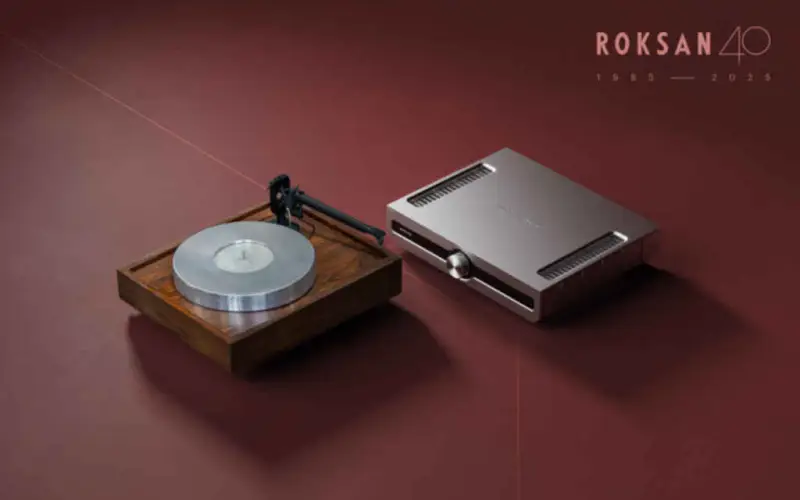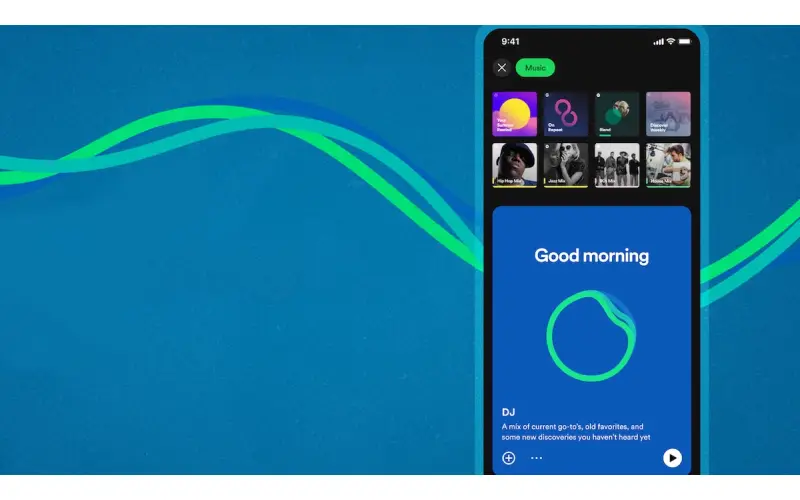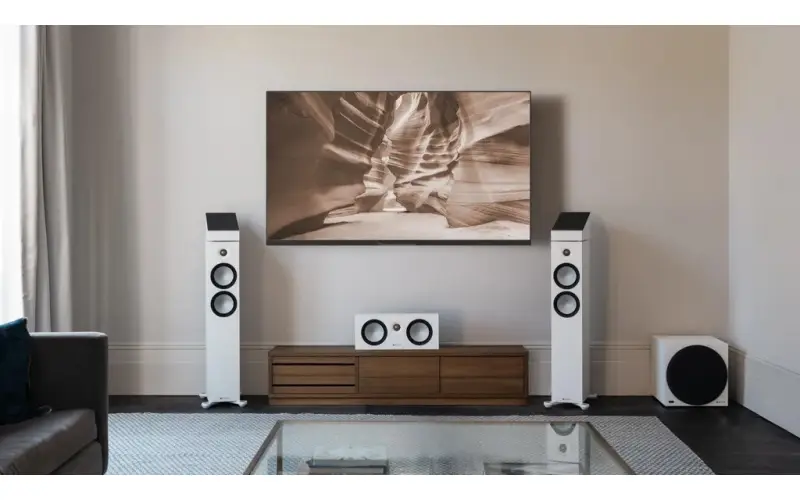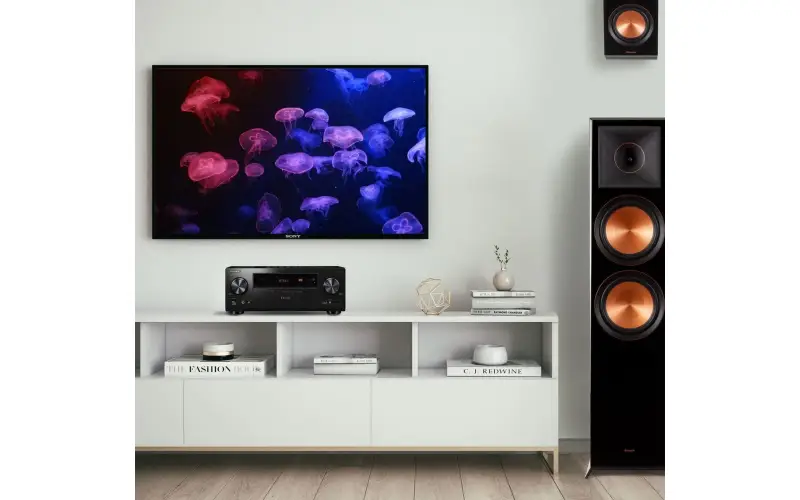By: Dipin Sehdev
Credit: AppleInsider was first to report this discovery based on Apple's developer documentation.
Apple is finally answering one of the most persistent feature requests from home theater enthusiasts: HDMI audio passthrough is coming to the Apple TV 4K. With the release of tvOS 26, Apple's premium streaming device will reportedly support bitstream audio passthrough, allowing it to send untouched, high-resolution audio formats—such as Dolby TrueHD and DTS-HD Master Audio—directly to AV receivers and soundbars for native decoding.
The finding, initially reported by AppleInsider, is based on documentation discovered within the developer beta of tvOS 26. Specifically, the beta includes a new AVAudioContentSource.passthrough API, indicating Apple is laying the groundwork for HDMI audio passthrough not only on Apple TV 4K, but across macOS, iOS, iPadOS, visionOS, and even watchOS (though the latter is likely of limited practical value in this context).
While Apple has not yet released a public-facing toggle or user setting for the feature in the tvOS 26 beta, the presence of this API marks a turning point in Apple’s approach to high-fidelity audio handling. For users invested in premium home entertainment setups, this could be one of the most important updates in years.
What Is HDMI Audio Passthrough—and Why It Matters
To understand why this matters, it's helpful to unpack what HDMI audio passthrough is, how it works, and why its absence on Apple TV 4K has been a pain point for serious home theater users.
HDMI audio passthrough refers to the ability of a source device (like a media player, game console, or streaming box) to pass the original, unprocessed audio signal directly to another device—typically an AV receiver or a soundbar—over HDMI. In this arrangement, the source device acts as a conduit, allowing the connected audio gear to handle all decoding duties.
This is different from the way Apple TV has historically handled audio. Currently, Apple TV 4K decodes all audio internally and outputs it in LPCM (Linear Pulse-Code Modulation) format, or in the case of Dolby Atmos, via Dolby MAT 2.0, which packages Dolby Atmos metadata into an LPCM stream.
While this approach works well for many users—and is broadly compatible with HDMI ARC and eARC—it also strips out the possibility of bitstreaming higher-fidelity audio formats like Dolby TrueHD and DTS-HD Master Audio, which are staples of Blu-ray discs and high-quality local media libraries.
Why Enthusiasts Have Been Asking for This for Years
The inability to bitstream lossless audio has been one of the Apple TV's few remaining shortcomings, especially for audiophiles and home theater users who rely on sophisticated receivers and speaker arrays. Competing platforms like the NVIDIA Shield TV Pro and Zidoo UHD5000 have long offered bitstream passthrough, making them a favorite among users who care about maintaining the integrity of the original audio track.
For example, lossless Dolby TrueHD carries not only high-resolution multichannel audio but also the highest-quality version of Dolby Atmos, embedded within the TrueHD stream. Similarly, DTS-HD MA provides a transparent path for DTS:X surround sound. Without passthrough support, Apple TV has had no way to deliver these formats in their native, uncompressed state.
That is finally changing with tvOS 26.
What Developers and Users Can Expect
Based on the AVAudioContentSource.passthrough API found in the beta, Apple is preparing a framework that enables app developers to adopt this feature on a case-by-case basis. That means apps like Infuse, Plex, and VLC—all popular choices for local media playback—will likely be among the first to implement passthrough functionality, pending developer adoption and app updates.
In a statement to AppleInsider, Apple confirmed that "by enabling the new passthrough audio when it's available and supported by a streaming app, a high-quality audio stream could be left alone by the Apple TV." This means that the untouched audio bitstream can flow directly to your AVR or soundbar for decoding, rather than being altered or re-encoded by the Apple TV itself.
It’s worth noting that Apple has not yet provided clarity on which formats will be supported out of the gate. The presence of the passthrough API does not necessarily guarantee that lossless Dolby Atmos (TrueHD) or DTS-HD MA will be enabled universally. There may be content, app, or even hardware limitations involved. However, the groundwork has clearly been laid.
A Home Theater Game-Changer
For users who have invested thousands in AV receivers, 7.1 speaker setups, and ultra-premium soundbars from brands like Sony, Denon, Marantz, or Anthem, this news is nothing short of transformative.
When a lossless audio track is decoded natively by a high-end AVR, the result is a more precise soundstage, improved dynamic range, and better directional accuracy in object-based audio formats like Atmos and DTS:X. This is particularly noticeable in immersive setups like 5.1.2 or 7.1.4 systems, where speaker placement and sound panning are crucial to the experience.
Until now, Apple TV’s internal audio handling has served as a bottleneck for these setups. Even if you had top-tier gear capable of decoding advanced codecs, you were stuck listening to whatever the Apple TV had already converted, often losing the benefit of bit-depth and dynamic resolution.
With tvOS 26, that limitation could soon be a thing of the past.
What About Streaming Services?
While this development opens the door for pristine audio quality with local media, streaming apps are a bit more complex. Services like Netflix, Disney+, Amazon Prime Video, and Apple TV+ often use Dolby Digital+ or Dolby Atmos via Dolby MAT, which may not take full advantage of passthrough capabilities—even if the platform now supports it.
Apple has not indicated whether native passthrough will extend to these apps, and historically, licensing and DRM concerns have kept streaming services from offering lossless audio formats. However, with the infrastructure in place, it’s conceivable that future updates could include support for bitstream delivery, provided content providers are willing to adopt it.
A Quietly Powerful Feature for Music Lovers
Although the headlines will focus on its impact on movies and home cinema, HDMI audio passthrough is a quiet win for music enthusiasts as well—especially those who prefer lossless or high-resolution audio formats such as FLAC, ALAC, or DSD.
Apps like Roon ARC, Qobuz, Apple Music, and Tidal could benefit if their developers opt to support passthrough, enabling native decoding by connected AV gear that may offer better DACs (digital-to-analog converters) than what’s inside the Apple TV. This is particularly useful in setups that leverage high-end 2-channel audio systems or network-connected AVRs with advanced music capabilities.
While Apple Music already supports high-resolution audio over HDMI, routing it via passthrough would preserve even more audio fidelity by minimizing signal processing and letting the receiver handle conversion duties.
Additionally, the integration of this feature across macOS, iOS, and iPadOS opens new possibilities for those using iPhones or iPads as media sources in music streaming setups, whether at home or on the go.
Where Things Stand Now
As of the first developer beta of tvOS 26, there is no user-facing toggle in the Audio settings of Apple TV 4K. This suggests that the passthrough feature is still in its early implementation phase. It may be hidden, inactive, or awaiting app-level support.
Still, the presence of the enumeration case in Apple’s AVFAudio framework is a strong indication that passthrough is no longer just an internal experiment. It is a feature that Apple is actively building and preparing for public use.
Looking Ahead: The Impact on Apple’s Ecosystem
The inclusion of audio passthrough support across tvOS, macOS, iOS, iPadOS, and visionOS represents a subtle but significant expansion of Apple’s AV ambitions. It shows that the company is increasingly open to giving users more control over audio signal flow—something long requested by professionals, enthusiasts, and developers alike.
This is especially relevant for macOS users who rely on external displays or connect their Macs to AV receivers for media playback. With passthrough, Macs can now become even more viable as high-fidelity media sources for home entertainment or desktop listening.
And while passthrough support on watchOS is mostly symbolic, its presence confirms that Apple is thinking holistically about media pipelines and not just focusing on TV playback.
Final Thoughts
Apple’s decision to implement HDMI audio passthrough in tvOS 26 is a huge step forward for the Apple TV 4K, and by extension, for the entire Apple ecosystem. It gives Apple’s media platform parity with long-standing features on competitors like NVIDIA Shield TV and Windows-based HTPCs.
This feature could mark a turning point in Apple’s relationship with audiophiles and home theater users—a group that has often been forced to compromise or turn to alternative solutions.
But as with many things Apple, the rollout may be incremental. It will depend on developer adoption, app updates, and possibly future hardware support. Nevertheless, the framework is here, and that’s the first—and most important—step.
Credit to AppleInsider for being the first to report Apple’s confirmation of this development.
As tvOS 26 evolves over the summer beta cycle and into its final release later this year, expect more clarity, more developer support, and—finally—the high-fidelity audio passthrough Apple TV users have been waiting for.





